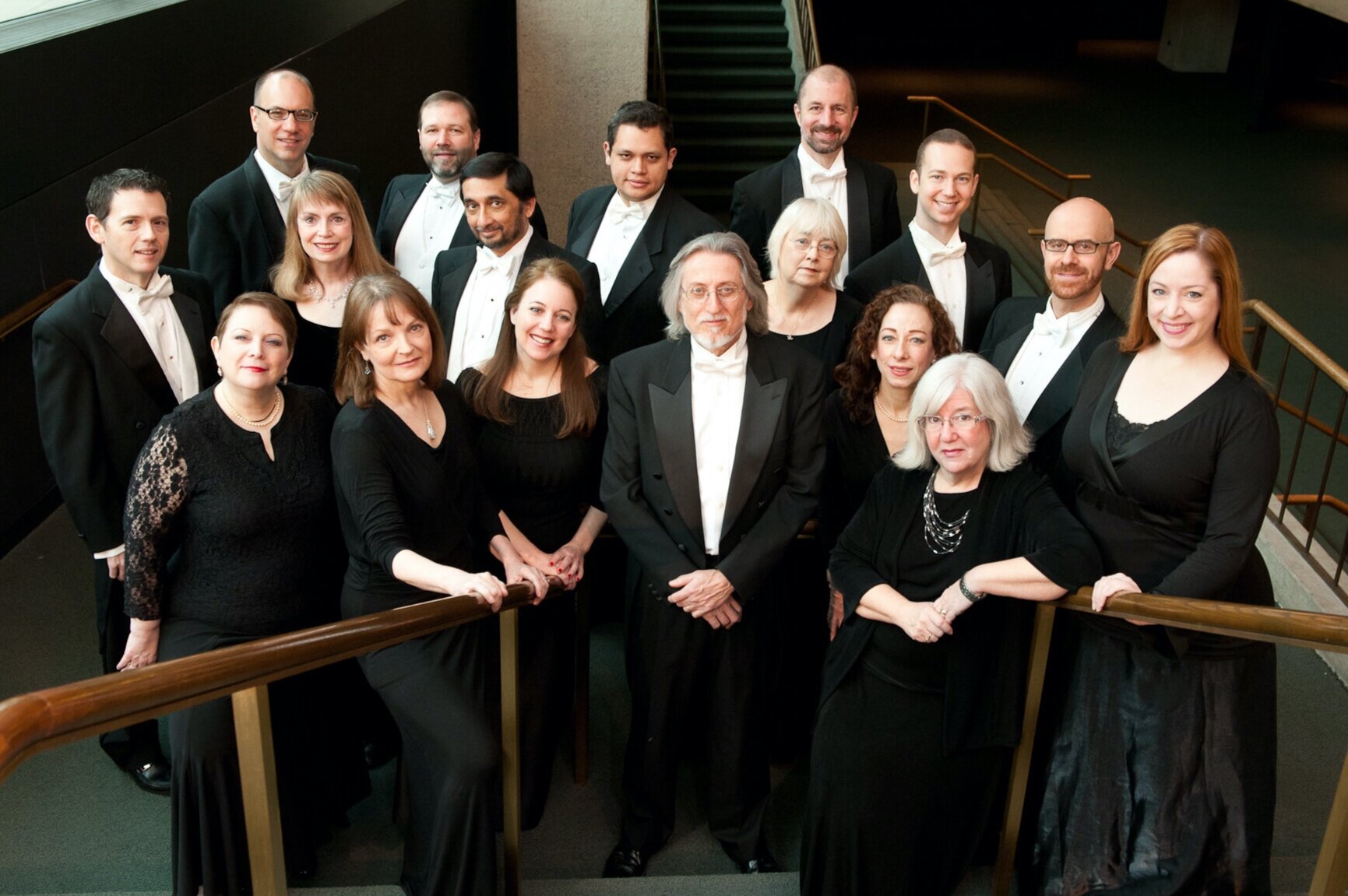Composer’s Corner: Imbrie's Dies Irae
Movement III: Dies Irae
Carrying forward the tradition of Mozart, Verdi and others before him, Imbrie cast the Dies irae as the centerpiece of his requiem. As one might expect, a medieval Latin poem intoning the terror of death and Judgement Day cries out for the massed forces of full choir and orchestra, which Imbrie puts to full use. The music is a radical departure in texture, drama and sheer sonic weight from the previous movement, making more than clear the previously referenced “implied dialogue.”
Unlike Mozart, Verdi et. al, Imbrie made use of only nine of the 19 original stanzas, seeking to keep the movement “in balance with the other elements chosen for the setting.” Revealingly, the omitted stanzas focus more on the overtly religious aspects of the topic, particularly those addressing themes of sin, absolution and retribution. More than any movement, Imbrie’s treatment of the Dies irae’s lurid imagery examples “word painting”, a compositional technique whereby the music literally mirrors textual meaning
New York Virtuoso Singers Harold Rosenbaum: Director
Under the direction of Maestro Harold Rosenbaum, the New York Virtuoso Singers have been among New York’s most celebrated chorales since 1988. While the ensemble performs a wide range of repertory, their specialty in new music has resulted in the commissioning of 110 new works and 550 premieres. For decades, in wide demand by the city’s orchestras as the “go-to” vocal ensemble, the NYVS have collaborated with Riverside Symphony on three occasions.
Harold Rosenbaum, whose extensive resume includes the founding of two vocal ensembles, has served in a multitude of settings as educator, lecturer and guest conductor. Universally regarded as a leader in his field, his 2017 book, “A Practical Guide to Choral Conducting,” published by Routledge, is a must-read for aspiring conductors.
Photo Credit: NYC-ARTs
The movement is laid out in three seamlessly connected sections. The first of these, based on the opening four stanzas of the original text (see below) quickly builds to breathtaking heights in the Tuba mirum (Hark, the trumpet). Admittedly, the Latin text can be difficult to make out in these tumultuous tutti passages, but the instrumental portrayal of “The trumpet, scattering a wondrous sound through the sepulchers of the regions, will summon all before the throne” is unmistakable. The dramatic timpani entrance at 3:37 sets the stage for following stanza (Mors stupebit), which commences with a telling harp entrance at 3:44. A less white-hot shade of intensity characterizes the unfolding interlude as humanity “awakes” in contemplation, characterized by gripping rapid fire exchanges between male and female choristers highlighted by quicksilver instrumental colorings.
The harp returns to gently announce the movement’s central section (4:23), built around two stanzas. The first of these (Quid sum miser) commences with the English horn, appropriately enough since that darkly poignant instrument has been the voice of misery and mourning dating back to the Baroque era. The ensuing woodwind murmurings are but the quiet before the storm as Imbrie, working through the stanza several times, builds to the climactic Rex tremendae.
Imbrie adheres to the original stanza sequence with the ensuing Recordare (timpani 6:43), in which the solemnly intoning tenors and basses take over, virtually unaccompanied by the orchestra. Imbrie maintains this monophonic focus on the male choristers through the Lacrimosa (lamentation—with English horn accompaniment), having skipped over eight stanzas from the original text in so doing. At the concluding prayer (Piu Jesu Domine), note the sudden, otherworldly reappearance of the female voices on the “Amen” (8:00), overlapping (if not interrupting) the Dona eis requiem intoned by the male voices. Clearly, their long absence of almost two minutes amplifies in musical terms the blessing’s power of profound quietude.
“
Dies iræ, dies illa
Solvet sæclum in favilla,
Teste David cum Sibylla.
Quantus tremor est futurus,
Quando Judex est venturus,
Cuncta stricte discussurus!
Tuba mirum spargens sonum,
Per sepulchra regionum,
Coget omnes ante thronum.
Mors stupebit et natura,
Cum resurget creatura,
Judicanti responsura.
Rex tremendæ majestatis,
Qui salvandos salvas gratis,
Salva me, fons pietatis.
Recordare, Jesu pie,
Quod sum causa tuæ viæ:
Ne me perdas illa die.
Lacrimosa dies illa,
Qua resurget ex favilla,
Judicandus homo reus.
Huic ergo parce, Deus:
Pie Jesu Domine,
Dona eis requiem. Amen.
”
“
Day of wrath and doom impending.
David’s word with Sibyl’s blending,
Heaven and earth in ashes ending.
Oh, what fear man’s bosom rendeth,
When from heaven the Judge descendeth,
On whose sentence all dependeth.
Wondrous sound the trumpet flingeth;
Through earth’s sepulchres it ringeth;
All before the throne it bringeth.
Death is struck, and nature quaking,
All creation is awaking,
To its Judge an answer making.
King of Majesty tremendous,
Who dost free salvation send us,
Fount of pity, then befriend us!
Think, kind Jesu! – my salvation
Caused Thy wondrous Incarnation;
Leave me not to reprobation.
Ah! that day of tears and mourning,
From the dust of earth returning
Man for judgement must prepare him,
Spare, O God, in mercy spare him.
Lord, all-pitying, Jesus blest,
Grant them Thine eternal rest. Amen.
”

